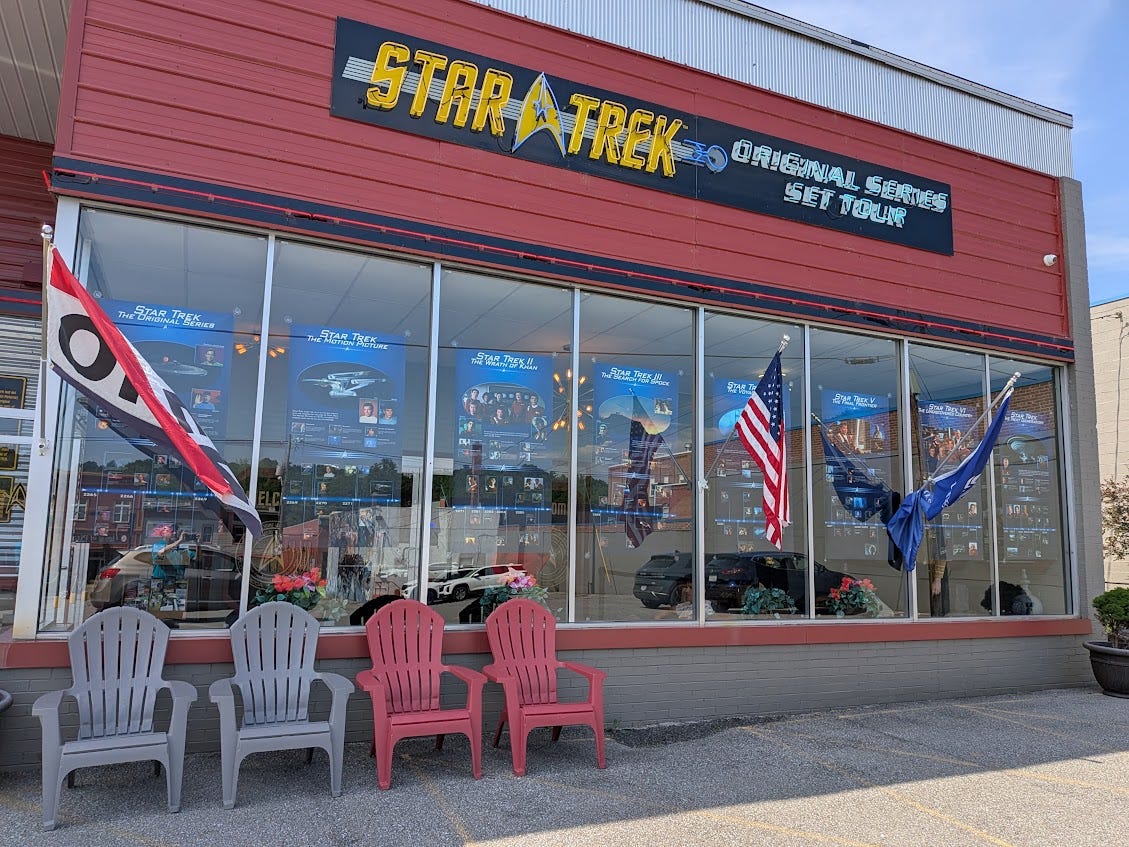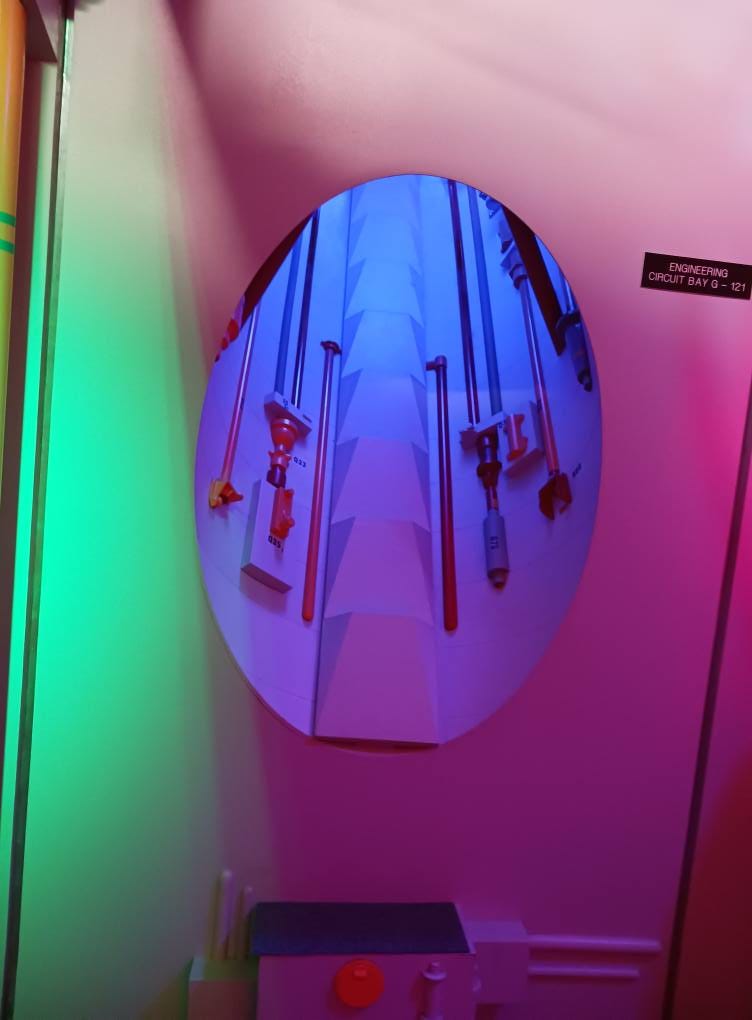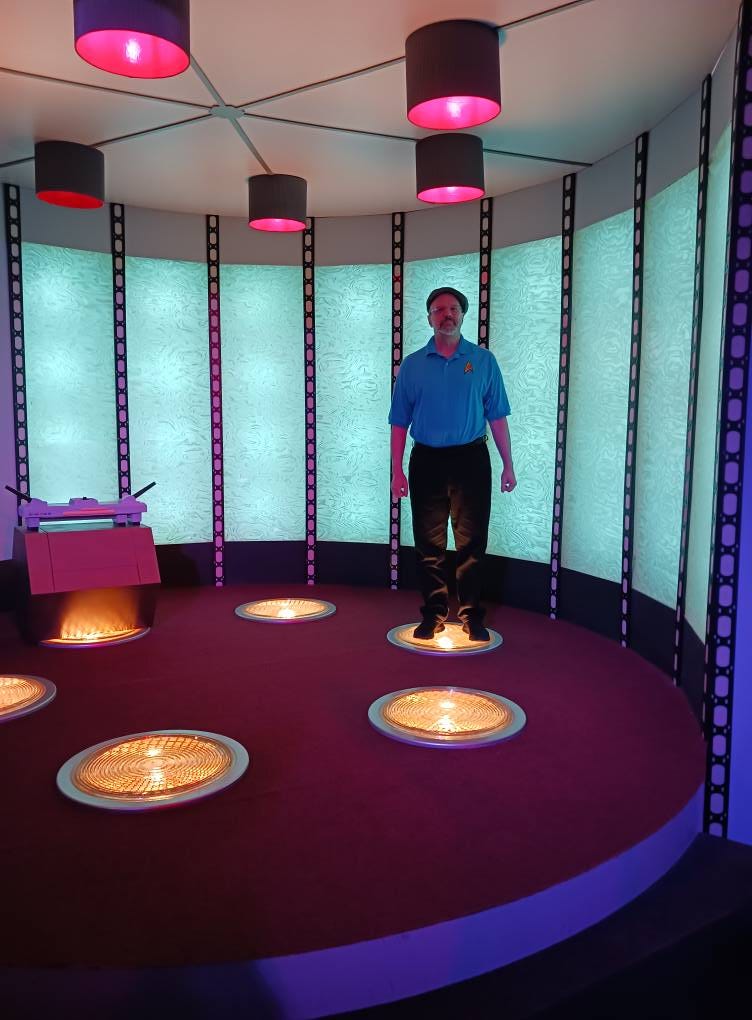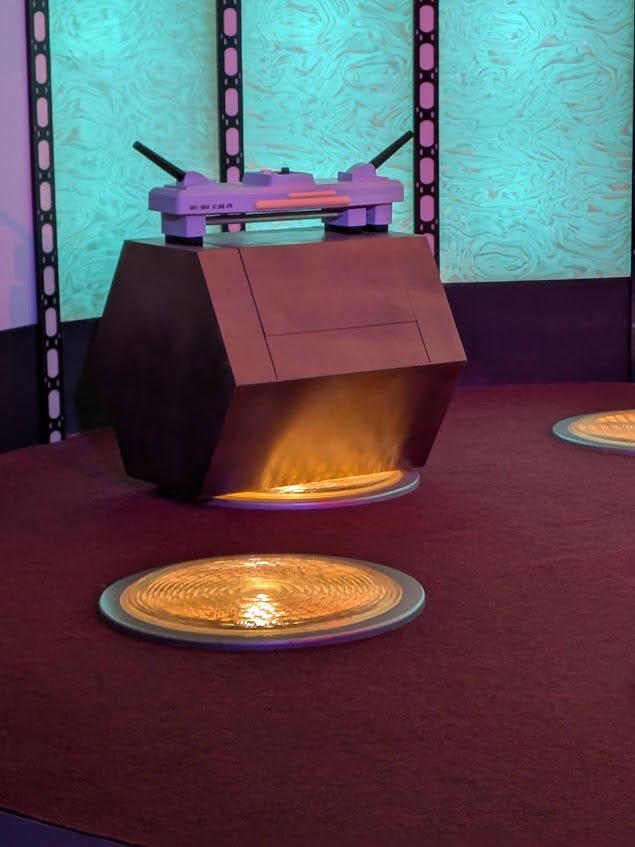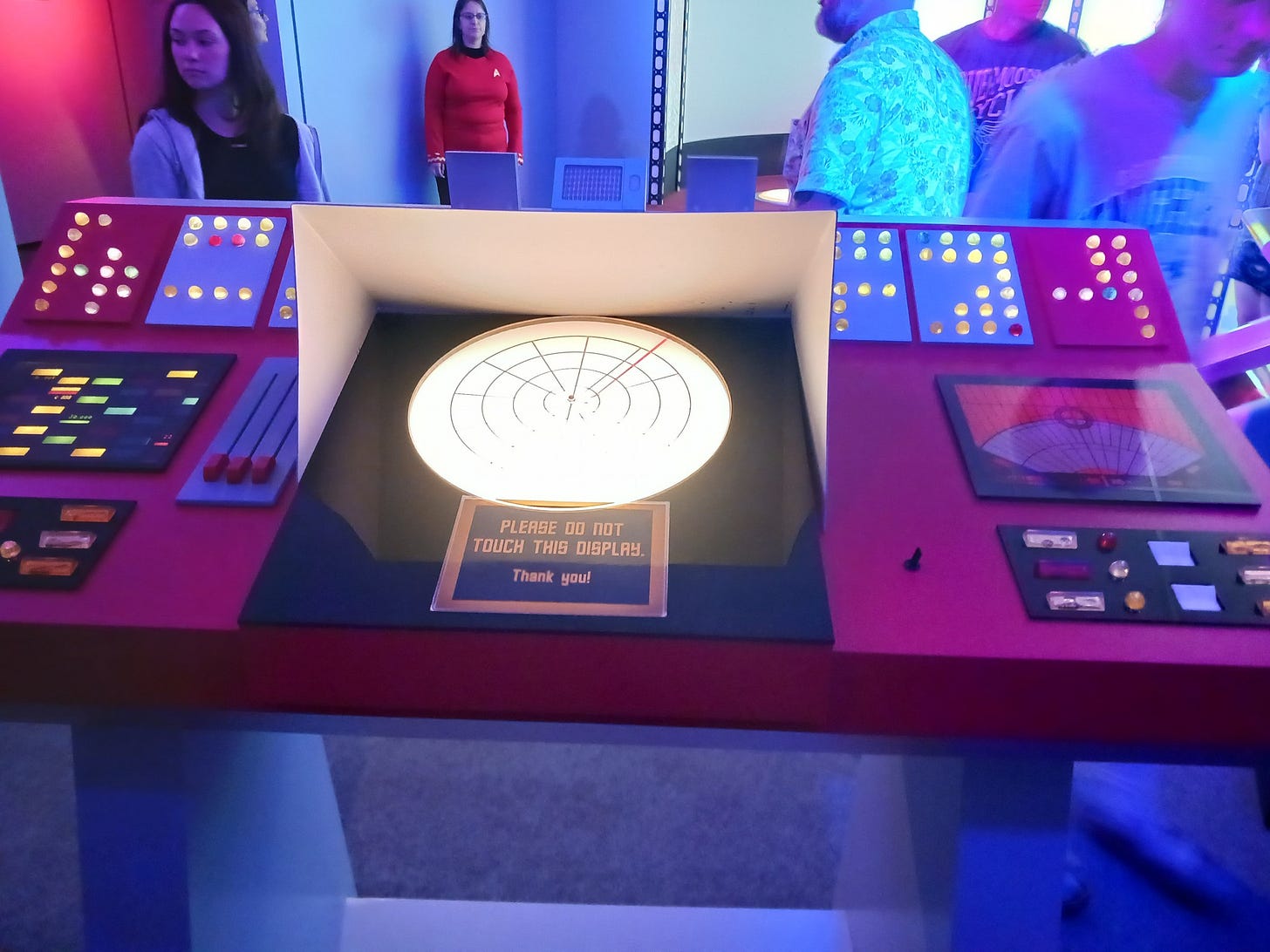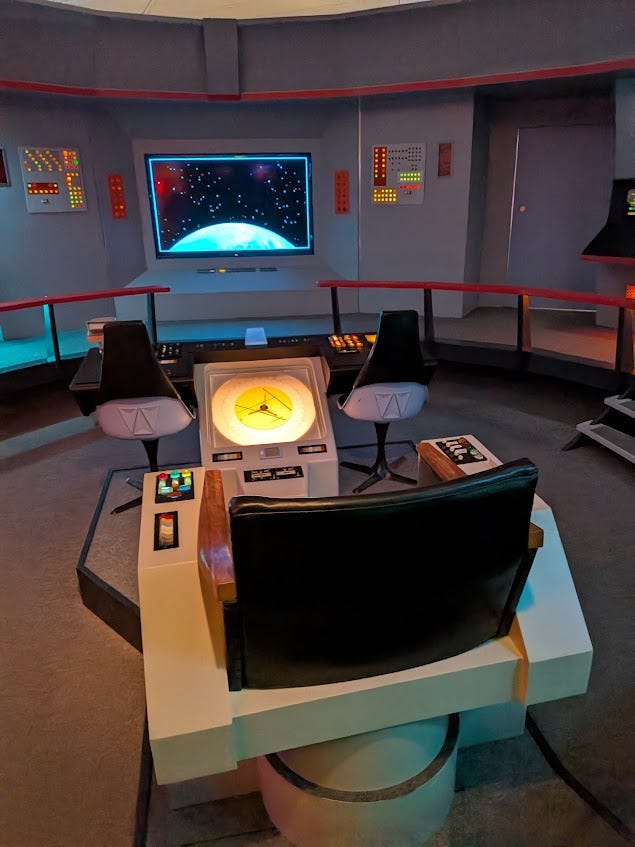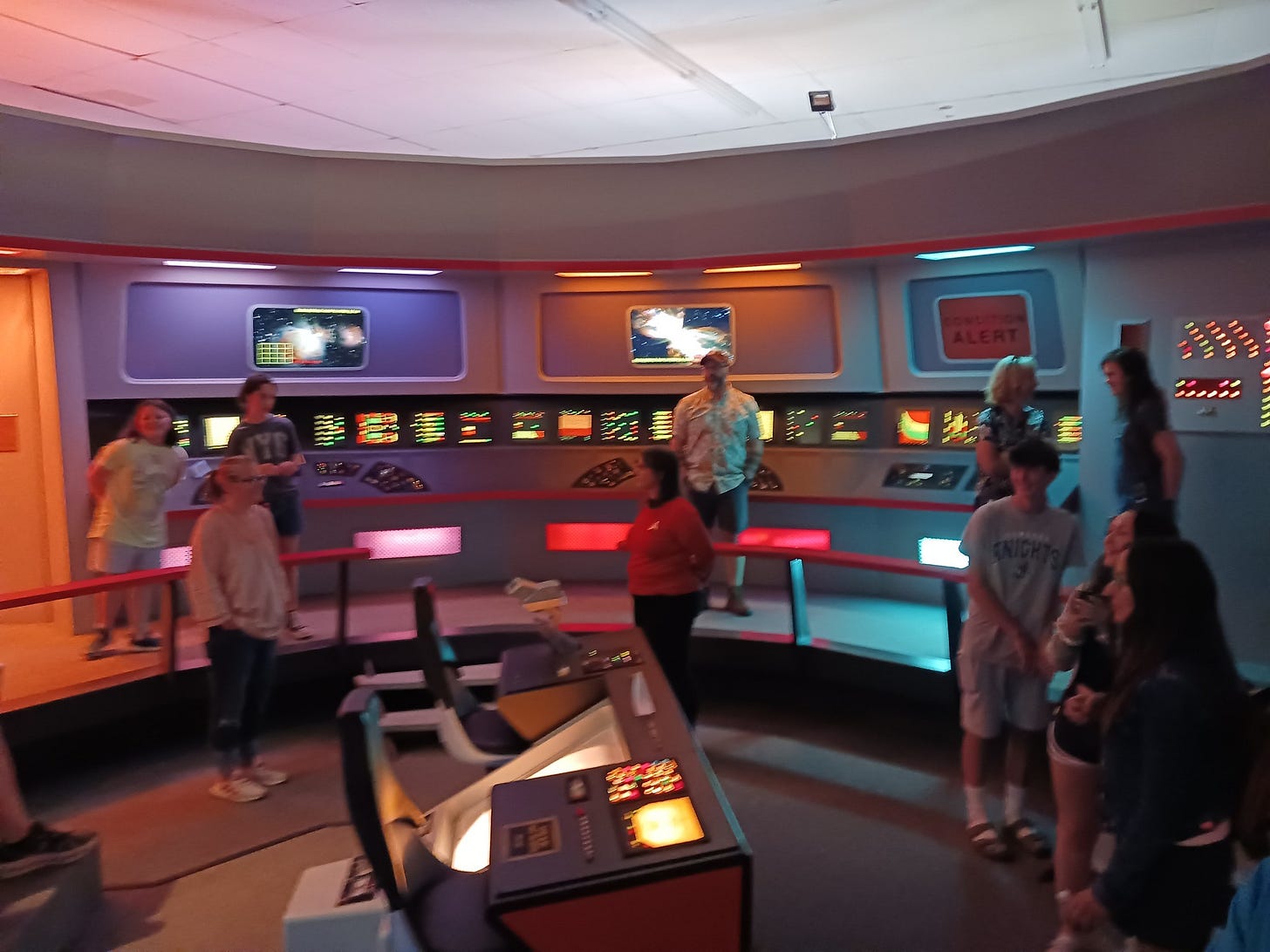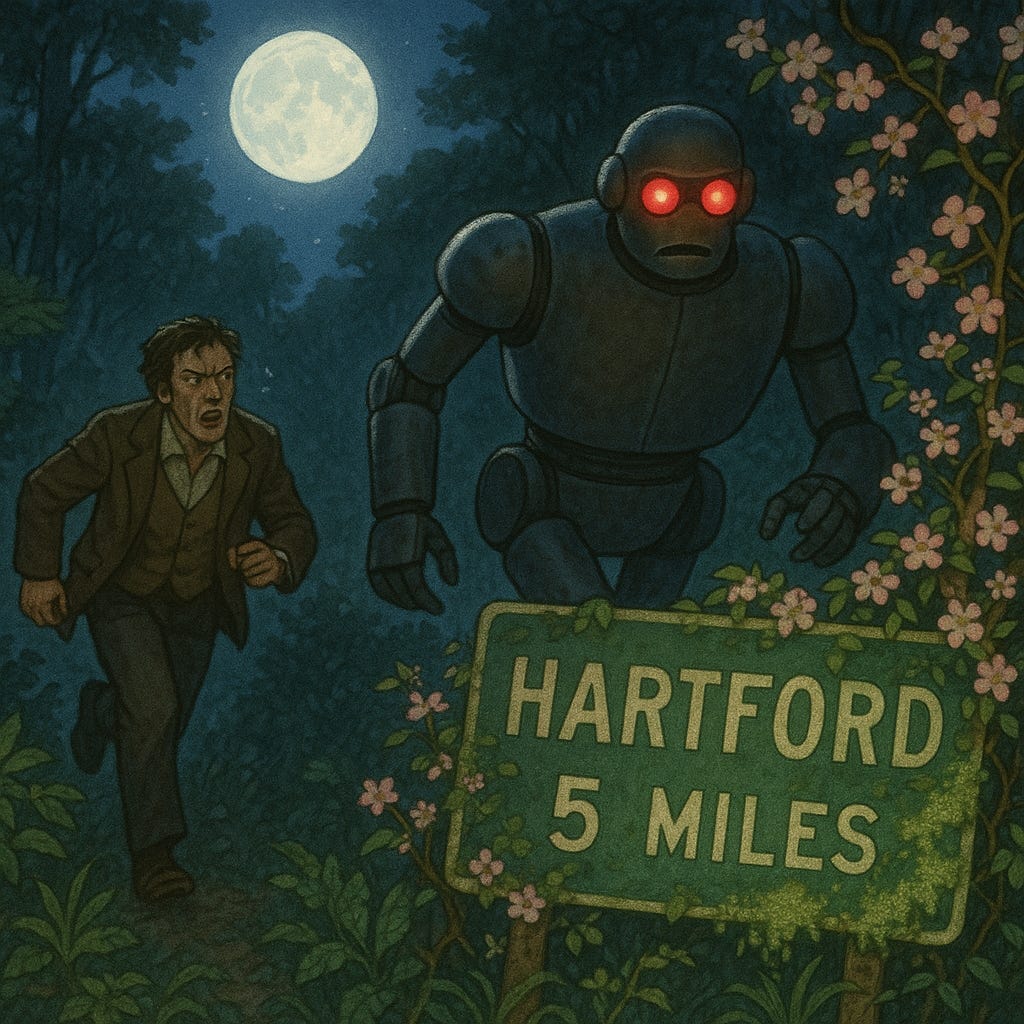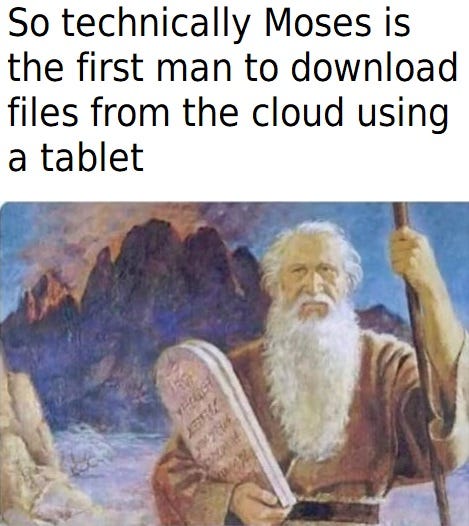Tales from the jar side: My visit to the Star Trek museum, UberConf coming, New Tftjs theme song, An AI opera, and the usual social media nonsense
My Saturday was going pretty well until I realized it was Sunday (rimshot)
Welcome, fellow jarheads, to Tales from the jar side, the Kousen IT newsletter, for the week of July 6-13, 2025. This week I’ve been busy preparing for my presentations at UberConf next week, and I visited the Star Trek museum in Ticonderoga, NY.
Star Trekkin, Across the Universe
Recently, my wife ran across the web site for the Star Trek Museum in Ticonderoga, NY. We decided we had to go, so this week we finally visited it.
From their About page:
When the STAR TREK television series was canceled in 1969, the original sets were dismantled and largely destroyed, only a few small items of the actual sets remain today, and those that have survived are in private collections. Trek superfan James Cawley began the process of rebuilding the sets just as they would have been seen 50 years ago when the series was being filmed, a 14 year journey has culminated in the most accurate rebuild of the original sets, and is now open and welcoming STAR TREK fans from all over the world!
Our sets are complete recreations built using the original blueprints, hundreds of hours of serious research and thousands of photographs – both period images and images culled from extensive review and capture from the original episodes. The sets will NOT and were NOT designed to move from one city to another and are fully licensed by CBS. The Star Trek: Original Series Set Tour Invites you to come see the Desilu Studio as it looked during the years between 1966-1969 while Star Trek was in production.
You have to make reservations for the tour (they get thousands of visitors from literally all over the world), which lasts about an hour. We had about 20 people in ours, of varying ages, since a lot of people brought their kids along. Our tour lasted closer to an hour and 20 minutes, but everyone was polite and friendly.
Many of the cast members from the various series visit, as you can see on the webpage. Shatner himself has been there 14 times, including the previous weekend. Kate Mulgrew is coming in a couple weeks. We deliberately avoided those crowds by coming on a Thursday, but still had a fair number of people.
There are many, many rooms, and lots of little hallways with features as you go by. For example, here’s a Jeffries tube:
We started in the transporter room.
NOTE: I’m only including a few photos here. For my complete set (of varying quality — I’m not great at taking pictures), see this Google photos album.
According to their agreement with Paramount, videos were not allowed, but you could take all the pictures you wanted.
As my wife said, “Beam me down, Scottie.”
We went from there to sick bay.
The woman in the red shirt was our tour guide, and of course she knew wearing that uniform was a risky proposition. She made it through our tour okay, though.
We also visited Engineering. Here’s the warp core:
The highlight of every tour, and the place you visit last, is the Bridge.
You’re not supposed to touch anything anywhere, and there’s nowhere to sit. They did give my wife a folding chair to carry around, though, which really helped. You are allowed to sit in the Captain’s chair:
We had a really good time. The drive took us about four hours each way, but we drove up the previous day and stayed overnight to break up the trip. On the way home in the Adirondacks we ran into the worst hailstorm I’ve ever experienced, which required everybody to pull over to the side of the road and wait it out, but that’s another story.
I do recommend the trip. My wife bought a tribble keychain, but apparently I didn’t get a picture of that. Maybe I’ll include one in next week’s newsletter.
UberConf Next Week
Next week is the big NFJS event of the year, UberConf. I’m giving five talks, sort of:
A Java Tier List: Ranking the Features from Java 1.8 to 24
Upgrade To Modern Java (2 parts)
Claude Code
Whispers of the Lost Hartford: An AI Opera Experience
If you know any NFJS speakers, you’ll be shocked to hear that I actually have all the presentations ready now, a whole four days early. Thanks go to Claude Code for a lot of that, because it helped me update the source code for all the talks, come up with exercises and demos, and even helped me create the slide presentations in Slidev format. So far I’ve been in the process of converting all my O’Reilly Learning Platform courses to Slidev, and I’m making progress. The results are much better, I think, because I can store them directly in the GitHub repositories for each course and update them very easily, not to mention all the capabilities Slidev gives me.
If you’re coming to any of my talks, please be sure to say hi. :)
The last talk, which involves an AI opera generator, is what I want to talk about next.
Hartford Ascending: An Opera of Love and Ruins
If you’re a long-term reader of this newsletter (informally known as a jarhead), you may recall that about a year ago I tried to create an app that involved as many different AI tools as possible. That resulted in a libretto (the script for an opera) for a show entitles, “Whispers of the Lost Hartford”. I put it online in a repository, but didn’t do much with it.
It’s been (nearly) a year, though, and the tools have gotten much better. I was able to convince the organizers to let me build a talk around this idea, and the result is “Hartford Ascending: An Opera of Love and Ruins”.
My basic philosophy regarding AI and humor is that AIs are not at all funny, at least not on purpose. You can ask an LLM to tell you a joke and it will draw from a remarkably limited set of Dad jokes (“Why don’t scientists trust atoms? Because they make up everything!”), but that’s about the best they can do. Humor is a subtle and highly subjective thing, and AIs don’t do it at all well.
On the other hand, if you give an AI a completely absurd situation, it will take it 100% seriously and provide you with lots of unintentional comedy.
This, then, is the setup I provided my tools:
They say that all operas are about a soprano who wants to sleep with the tenor, but the baritone won't let her. See, for example, La Traviata, Rigoletto, or Carmen.
You are composing the libretto for such an opera.
The setting is the wild jungles of Connecticut, in the not-so-distant future after global warming has reclaimed the land. The soprano is an intrepid explorer searching for the lost city of Hartford. The tenor is a native poet who has been living in the jungle for years, writing sonnets to the trees and composing symphonies for the monkeys.
The baritone is a government agent who has been sent to stop the soprano from finding the lost city. He has a secret weapon: a giant robot that can sing Verdi arias in three different languages.
The soprano and the tenor meet in the jungle and fall in love. They decide to join forces and find the lost city together. But the baritone is always one step behind them, and his giant robot is getting closer and closer.
Originally my plan was to assign a different LLM tool to each character, but switching between tools nearly every line proved to be problematic. Also, the LLMs want to return way more than just the next line or stanza. I therefore went with alternating scene by scene. I’m using GPT-4.1 and Claude Sonnet 4 together, back and forth, to write the opera. In this case, there are eight scenes from beginning to end.
I then used OpenAI’s new gpt-image-1 image generator to create an illustration for each scene. For example:
I added a narrator to introduce the opera and give directions, which uses ElevenLab’s text-to-audio capability.
Of course, what use is art without a critic? (Don’t answer that.) I therefore asked Google’s Gemini 2.5 Flash to generate a review of the opera, which came out surprisingly positive. Anton Ego it’s not.
The only part I couldn’t automate was creating the actual music. I use Suno AI to generate music, but that doesn’t have a programmatic API. You have to use it on the web site. That, however, has improved dramatically (no pun intended) in the last year.
Rather than include the results here, instead I’ll use the Tales from the jar side theme song. Again, some of you may vaguely remember that I used Suno to create a theme song for this newsletter a year ago, with lyrics supplied by GPT-4, which was state of the art at the time.
Using the same lyrics, I asked Suno to create an a cappella version of the Tftjs theme song, with lots of harmony. This is the new result:
The audio quality is amazing. I did create an mp3 for the first scene of the opera, which was a duet between the soprano and the tenor. Like everything else, it’s in this GitHub repository, which you are welcome to browse at your leisure. The slide presentation* is in the file called slides.md, but I included a pdf version as well.
*Even I’m still shaking my head that the slides are ready already.
See the directory hartford_ascending_an_opera_of_love_and_ruins under src/main/resources for the results.
That also includes the final step, which was to upload everything to NotebookLM and have it generate a podcast discussing the opera, again taking this entire exercise way too seriously. I included the resulting wav file in the repository, too.
I would say this is the silliest thing I’ve ever done with AI, but there are a lot of contenders for that title. This one is up there, though, and I’m happy I’m going to be able to inflict, er, share it on a helpless audience at the conference.
Billy Korando at CT JUG
This week, noted developer advocate at Oracle Billy Korando came through Connecticut, and our local CT Java User Group leader Ryan Cuprak convinced him to give a talk about the latest and upcoming features in Java.
Due to his travel schedule, his talk was on Friday night, so attendance was low but enthusiastic.
(Yeah, I can’t believe it didn’t occur to me to take a picture. Sigh. I really have to work on that.)
I’ve known Billy online for a long time, which I suppose you’d call a para-social relationship. It was great finally meeting him in person. He did an excellent job, and was freely able to talk about low-level code issues, containers, cloud deployments, and garbage collectors, which is quite a range.
If you’re interested, his GitHub repository of presentations is here.
Social Media
With all the images above, I’ve probably already exceeded the length limit allowed in email. Remember that to see the full newsletter, the easiest thing to do is to click on the title of the newsletter shown above. That will open it in on the Substack website, which can go as long as you like.
I remember that
I can see how that might still be a problem.
The Spice Awakens
That thread has tons of clever names. I didn’t bother looking up what the actual name is going to be, since we’re going to be inundated with ads for it soon enough.
(Katie Mack suggested SPICE WORLD and DUNE AND DUNER and those are both awesome.)
Cloud computing
With remote security and validation, I imagine.
What are we doing tonight, Brain?
Snarf!
It’s academic
Bad memory
Yeah, I get that.
If you like the Rupert Holmes one-hit-wonder
Oof.
Have a great week, everybody. :)
Last week:
Trip to the Star Trek museum
This week:
UberConf
Week 1 of Spring in 3 Weeks, on the O’Reilly Learning Platform





